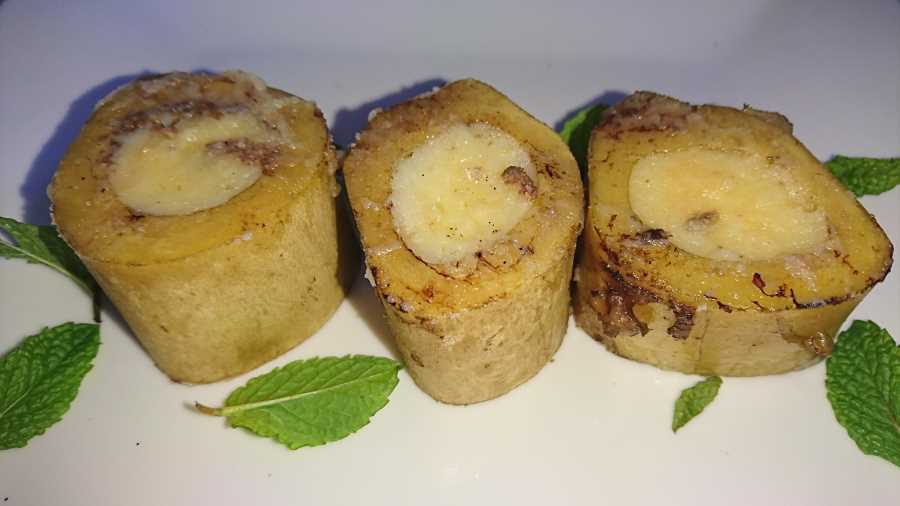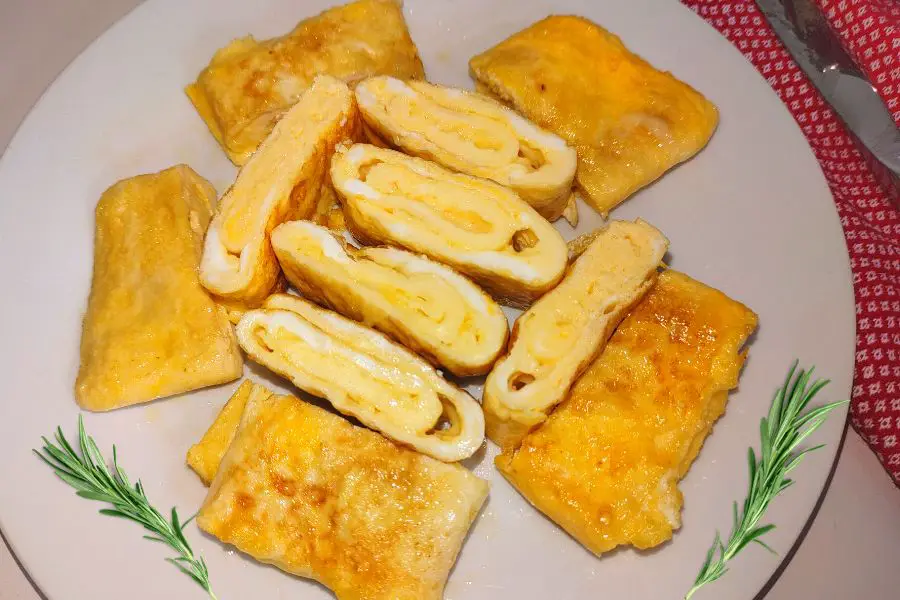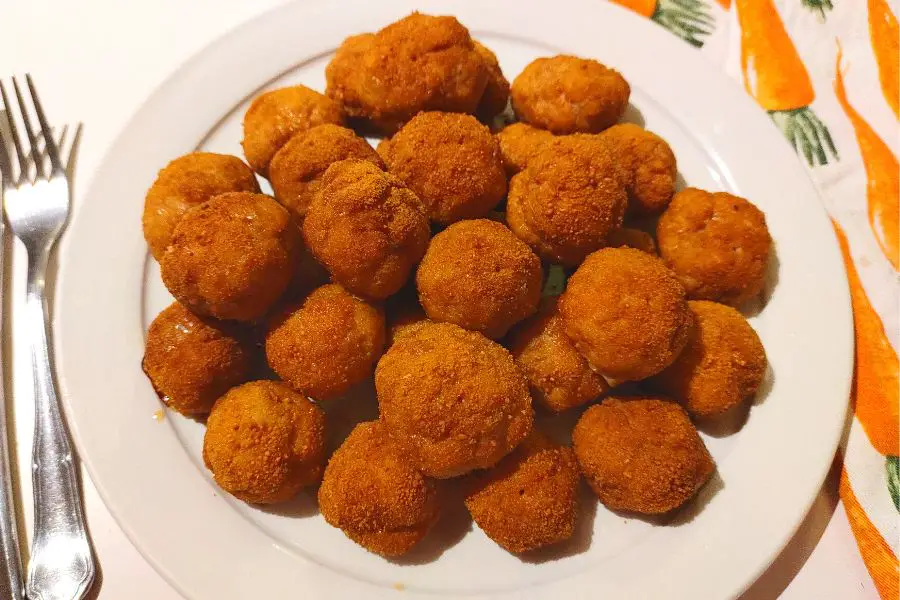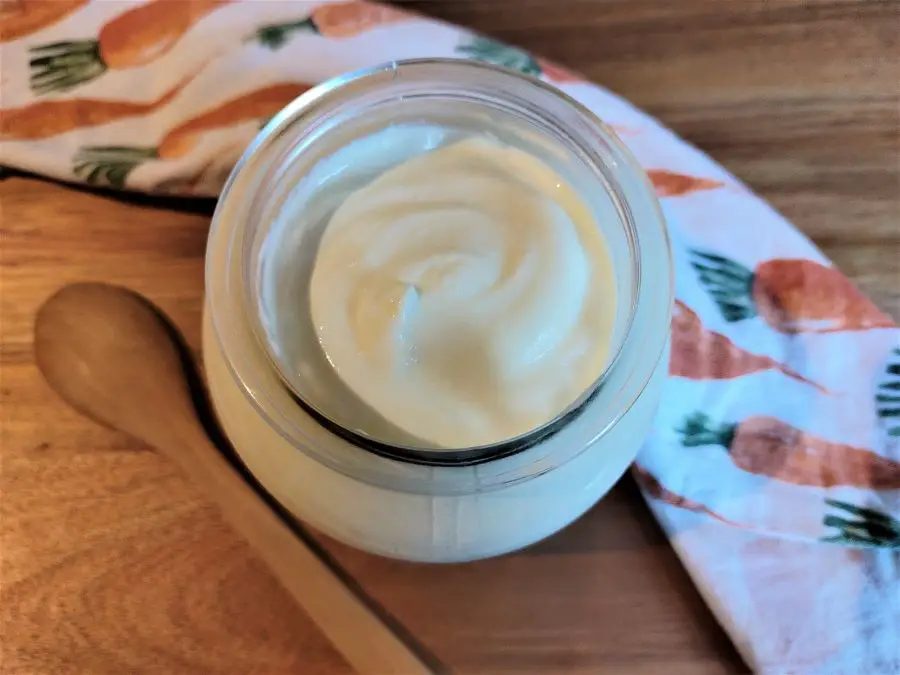Bone marrow is very cheap, nutritious, easy to cook, and tastes incredible. This post will show you several ways that you can add bone marrow to your carnivore diet.
Bone marrow nutrients and health benefits
Bone marrow nutrients
Bone marrow was a significant source of energy and nutrition for prehistoric humans and is still enjoyed by many cultures around the world today.
Archeological evidence from the Paleolithic period shows that our ancestors consumed marrow immediately upon procurement but also brought limbs and skulls to their caves and saved them for later consumption.
Somehow, our ancestors knew that bone marrow was good for them and they were right. Bone marrow is a great source of many nutrients as can be seen in the table below.
| Nutrient | Value | %RDA |
|---|---|---|
| Vitamin A (RAE) | 45.25 | 6.5% |
| Vitamin B1 (mg) | 0.05 | 2% |
| Vitamin B2 (mg) | 0.51 | 39.2% |
| Vitamin B5 (mg) | 0.18 | – |
| Vitamin B7 (mg) | 0.29 | – |
| Vitamin B12 (mcg) | 1.24 | 62% |
| Vitamin E (mg) | 2.25 | 28% |
| Zinc (mg) | 0.1 | 1.4% |
| Calcium (mg) | 340 | 34% |
| Iron (mg) | 3.1 | 21% |
| Selenium (mg) | 0.2 | – |
Bone marrow is an especially good source of calcium compared to muscle meat.
A 100 gram serving of beef steak gives you around 16 mg of calcium, whereas the same serving of bone marrow has 340 mg of calcium, 21 times the amount of calcium in muscle meat.
If you don’t eat dairy, adding bone marrow to your carnivore diet can help boost your calcium intake significantly.
Bone marrow is also a source of good quality protein and fat. There are 7 grams of protein and 84 grams of fat per 100 grams of marrow.
Bone marrow is considered a source of collagen, glycine, glucosamine and vitamin K2. However, I haven’t found any data on their exact values.
Overall, marrow is probably the most nutrient-dense type of animal fat you can eat.
Bone marrow’s health benefits
In addition to being a great nutrition source, bone marrow has been found to:
- Help the normalization of white blood cell counts and a return of energy in leukemia patients. This is thanks to a group of compounds in bone marrow called alkylglycerols (AKGs) which are also found in human breast milk. They are thought to significantly contribute to an infant’s immature immune system
- Have potent antioxidant effects. AKGs were found to inhibit the growth of cancer cells and reduce the severity of radiation sickness
- Have anti-tumor effects. When AKGs were administered to cervical cancer patients, a regression of tumor growth was observed
- Improve skin, bone and joint health thanks to its collagen, calcium and glycine and glucosamine contents.
Bone marrow is a part of many countries’ cuisine today. Germany has a classic beef soup served with Markklößchen (bone marrow balls) and Ossobuco is an Italian dish of braised veal shanks with the marrow bones intact. The French and British also have many dishes featuring bone marrow. Bone marrow dishes are on the menus of many trendy restaurants all over the world too.
However, for most people in the Western world, bone marrow is not part of their diet, not even once in a while.
If you haven’t tried bone marrow before, hopefully, learning about the health benefits of bone marrow and how easy it is to cook marrow in this post will inspire you to try it out and make this treasure-trove of nutrition part of your regular diet.
Various ways to add bone marrow to your carnivore diet
If you are not used to having organ meat, it’s a good idea to start with bone marrow because it doesn’t have a strong offal taste like some organ meat.
Simply roast it for 15-20 minutes with just a bit of salt and you can enjoy a delicious buttery and creamy marrow.
Below are a couple of bone marrow recipes and suggestions on many other ways to add more bone marrow to your carnivore diet.
1. Roasted bone marrow recipe
Ingredients
- 4 to 6 marrow bones (cut lengthwise or crosswise)
- Sea salt to taste
- Other optional seasonings (a pinch of pepper, 4 finely grated garlic cloves, 2 tbs finely chopped parsley)
Instructions
- Bring the marrow bones to room temperature by leaving them on the kitchen bench for 30 minutes to an hour
- Pre-heat the oven to 450°F (230°C)
- Place the bones in a roasting dish. If they are cut lengthwise, place them the cut side up. If they are cut crosswise, place them standing up. Sprinkle the marrow with salt and other optional seasonings if desired
- Roast for 15 – 25 minutes depending on the thickness of the bones or roast until the marrow begins to bubble and turns golden colour. If you over cook it, the fat will melt and the marrow will slide out of the bones.
To test for doneness, insert a skewer into the marrow, it is ready when you feel no resistance.
You will need 1 to 2 marrow bones per person, depending on the size of the bones.
Because you don’t know how much marrow you are going to get from the bones and because they are generally very cheap, it’s a good idea to buy extra.
You can ask the butcher to cut the bones lengthwise or crosswise.
Cutting them lengthwise will make it easier to scoop up and use as part of other dishes (see suggestions below).
Cutting them crosswise will make them easier to fit in a stockpot later in case you want to save them to make bone broth.
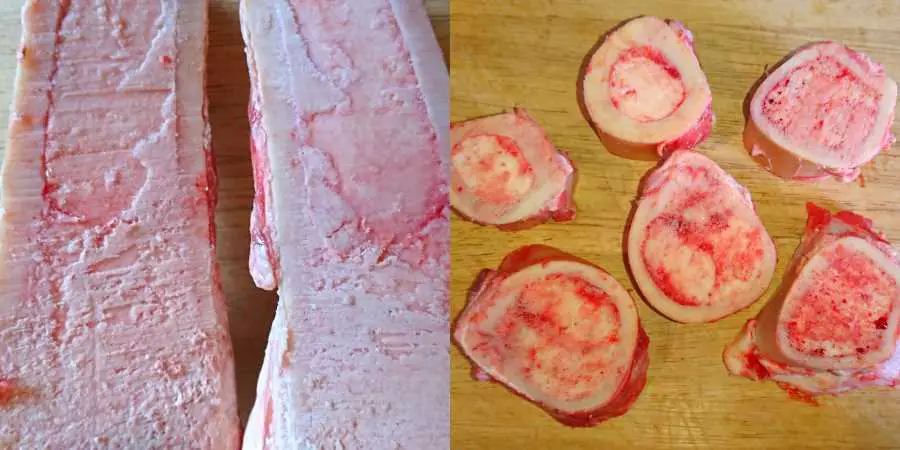
You can reduce the roasting time to help preserve the nutrients.
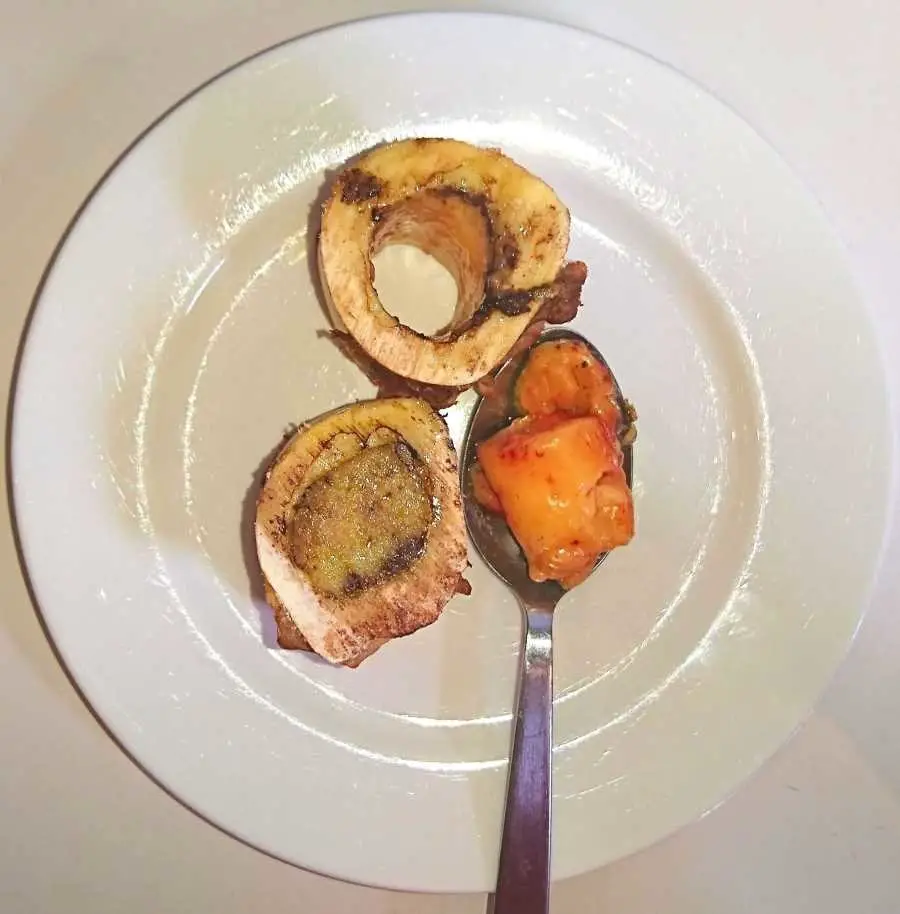
After enjoying the marrow, you can use the discarded bones to make bone broth.
If the bones are from grass-fed cattle, the fat will be slightly yellow because it is rich in beta-carotene. You can skim the fat off and save it for cooking later.
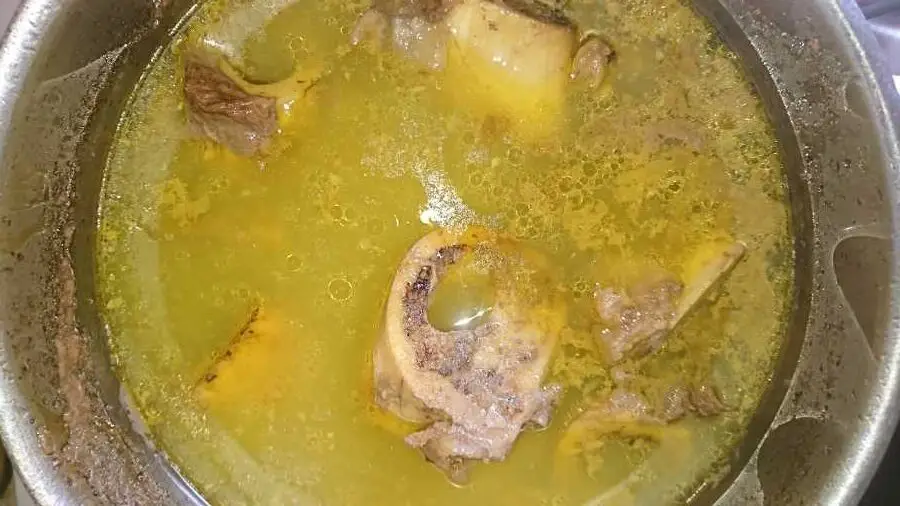
If you simmer the bones or slow-cook them for a couple of days, you will have soft edible bones that are a great source of calcium and other minerals.
If you don’t use all of the bones, crush and scatter them in your garden or put them in the compost bin to enrich the soil rather than throw them in the trash.
2. Bone marrow custard recipe
This is a recipe from the Weston Price Foundation which is very carnivore-friendly.
Ingredients
- 1 cup heavy cream
- 2 ounces bone marrow
- 2 egg yolks
- 1 whole egg
- sea salt and pepper to taste
This recipe yields 4 servings.
Instructions
- Cut the marrow bones 2-3 inches in length, soak them in cold water for 12-24 hours and change water several times during this process. It will make the marrow turn a pale creamy pink color instead of the unappetizing grey
- Cover the bones with cold water, bring slowly to boil and simmer for about 20 minutes. Scoop the cylinder of marrow out with the handle of a small spoon
- Blend cream, marrow and eggs and seasonings. Pour into four small buttered ramekins, place in hot water and bake at 300°F (150°C) for about 20 minutes or until the custard is set.
- Let cool, unmold, and serve as an accompaniment to meat.
If you don’t mind the grey color of the marrow, you can skip the soaking process in step 1.
3. Other ways to enjoy bone marrow
Examples of other ways that you can enjoy bone marrow:
- Chop the marrow into small bite size and add to whisked eggs to make even more nutritious scrambled eggs
- Fry the marrow lightly and eat it with a lean steak as a way of adding more fat to your diet
- Mash the marrow and add to ground beef to make burger patties or meat balls
- Cube the marrow and add it to a meat stew at around 15 minutes before finishing
- Add marrow to your pâté recipe and make it more creamy and nutritious
- Eat raw marrow with just a bit of sea salt. If you buy fresh marrow bones from the butcher and get them cut for you, the marrow can be eaten raw safely. Because the marrow is protected by the bone casing, it is much less likely to be contaminated compared to meat. However, raw marrow doesn’t taste as nice as roasted marrow and is better suited to those who are used to eating raw or rarely cooked meat
- Make thick bone broth. You can buy some marrow bones, roast them till caramalized then simmer for 24-48 hours to make a thick bone broth. Let the broth cool and freeze it in ice cube trays for later use. Put one bone broth cube in a small cup of boiling water and you’ll have an instant cup of bone broth.
References
Roasted bone marrow by Leite’s Culinaria
Roasted bone marrow – Good Food
Bone marrow – Weston Price Foundation
Bone marrow storage and delayed consumption at Middle Pleistocene Qesem Cave, Israel (420 to 200 ka)
Prehistoric humans ate bone marrow like canned soup 400,000 years ago
Level of selected nutrients in meat, liver, tallow and bone marrow from semi-domesticated reindeer
Please check out my other carnivore diet recipes in the recipe library here which is updated regularly.
Disclaimer: The information in this post is for reference purposes only and not intended to constitute or replace professional medical advice. Please consult a qualified medical professional before making any changes to your diet or lifestyle.

